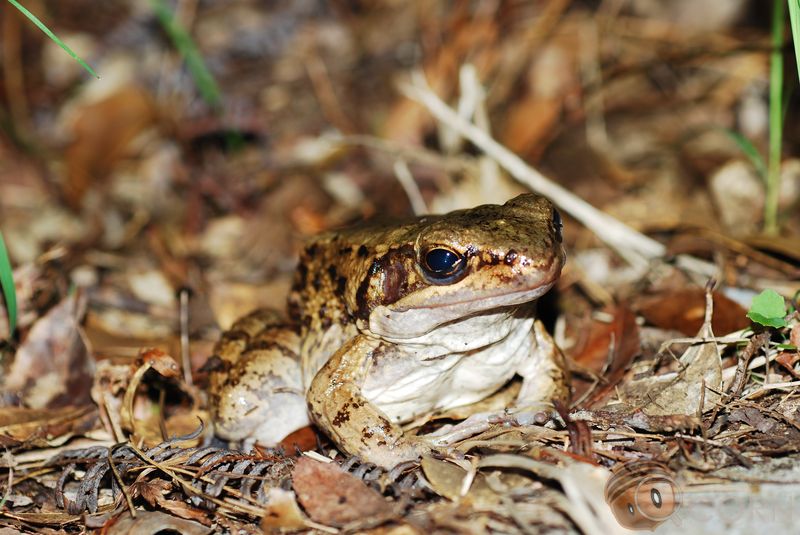Babina holsti
Japanese name: ホルストガエル
Chinese name: 赫氏拇棘蛙、赫魯斯特蛙、琉球拇棘蛙
English name: Holst’s frog
Distribution: Northern Okinawajima, Tokashikijima
Holst’s frog can grow up to 12 cm in length, making it the largest native frog species in Okinawa. It breeds in summer and is known for its low, dog-like calls. When a rival male is nearby, it produces a unique territorial call with a distinct tonal pattern.
Males have a sharp, claw-like structure on their thumbs, which is a modified bone used during combat or to hold onto females during amplexus. The eggs are laid in still water and can often be seen floating on the surface.
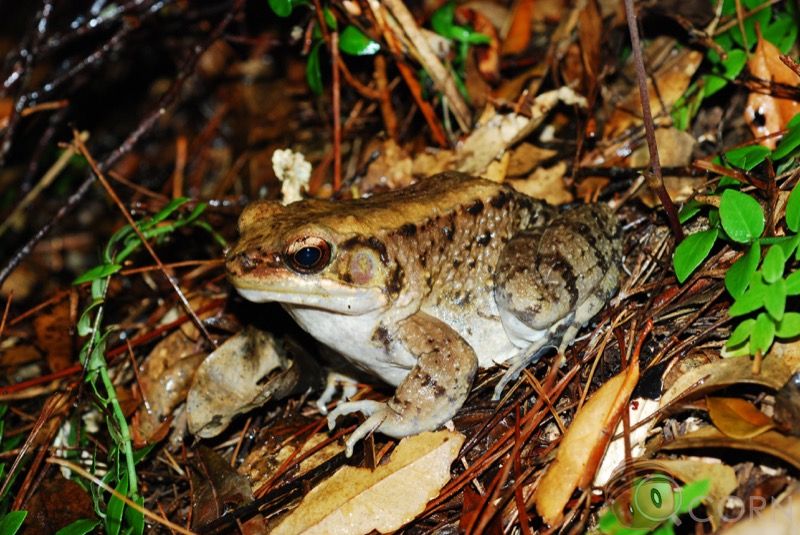
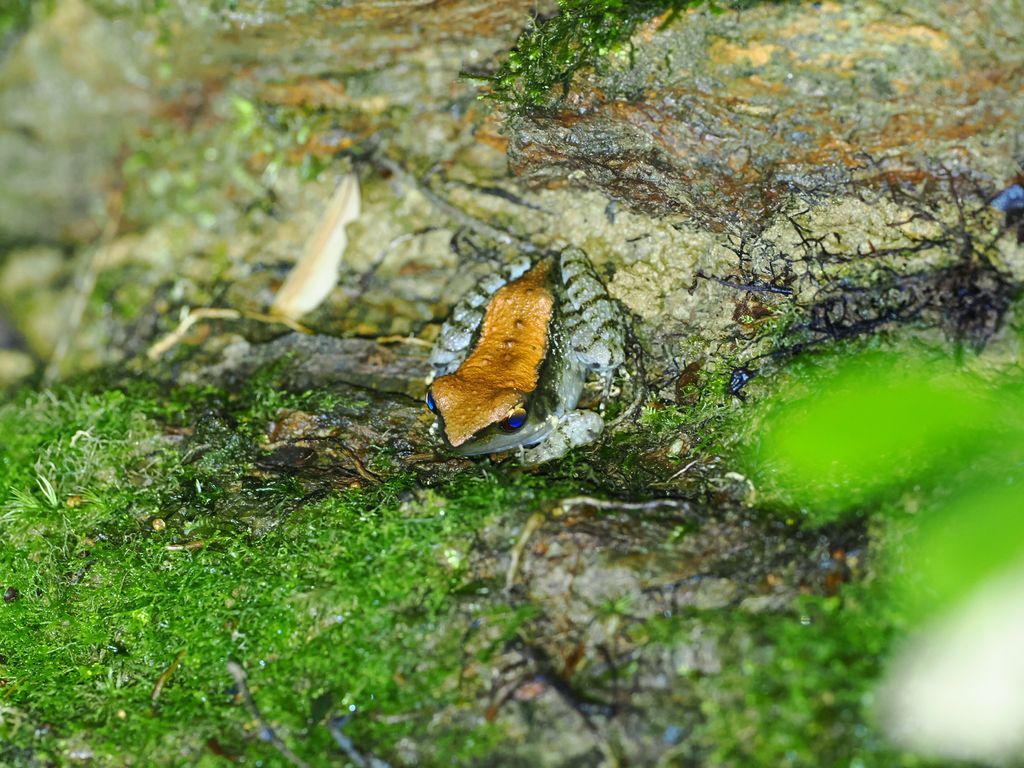
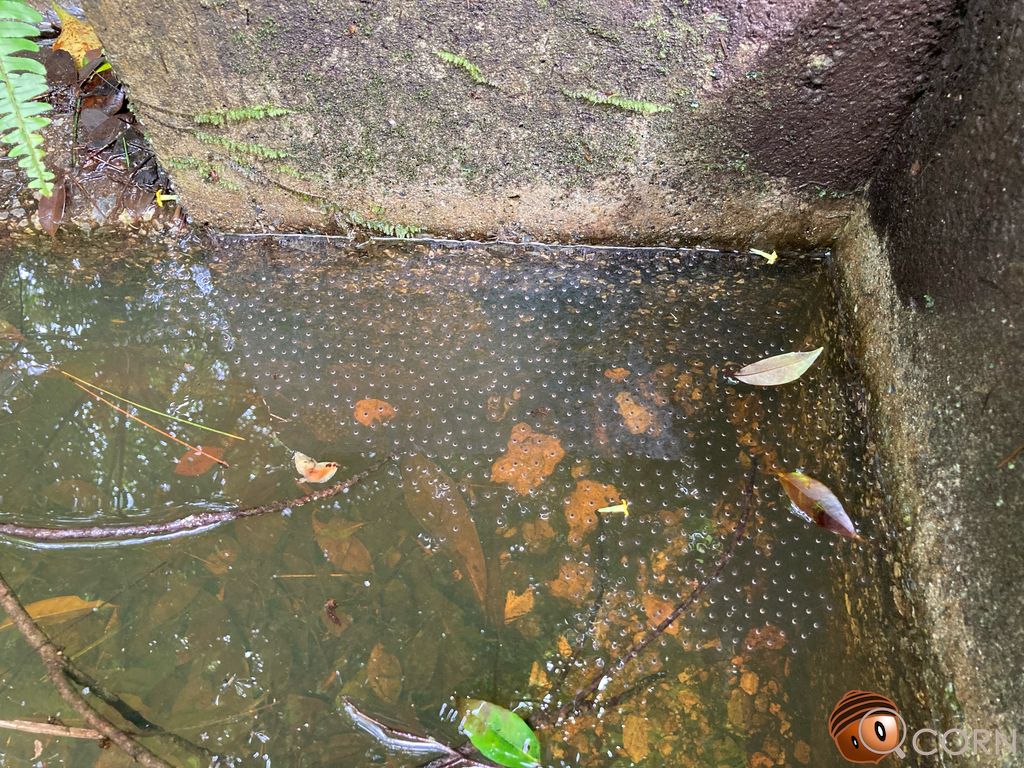

The species name holsti in Babina holsti is believed to be named after the collector, though Japanese herpetological references rarely elaborate on this. “Holst” refers to P. A. Holst, a Swedish collector who traveled across East Asia under commission from British ornithologist Henry Seebohm of the British Museum.
Between 1879 and 1892, Holst collected specimens across mainland Japan, Tsushima, the Ogasawara Islands, the Iwo Islands, and the Ryukyu Islands. Based on records of Japanese Funnel-web Spider specimens, he also collected in Okinawa in 1892, during which he may have collected Holst’s frog.
From 1893 to 1895, Holst conducted fieldwork in Taiwan. According to anecdotal accounts, he was such a skilled marksman that local Indigenous people, who had initially plotted to assassinate him, were deterred. The endemic Taiwan Yellow tit (Parus holsti) was named by Seebohm based on specimens collected by Holst.
Holst died of tuberculosis in 1895 and was buried in Tainan, Taiwan. However, the cemetery was later developed by the Chinese Petroleum Corporation, and all gravestones, including Holst’s, were removed. His gravestone is now considered lost.
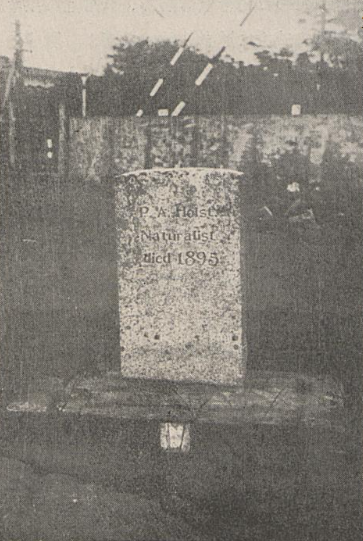
References:
Takashi, Ryoichi (1935). “Zoological Collector P. A. Holst.” Digital Archives and E-Learning Integrated Platform, pp. 23–25.
History of Ichthyological Studies in Taiwan
Avifauna Surveys of Taiwan
History of the Checklist of Japanese Birds
Biophysics Journal Club, National Chung Hsing University
